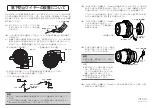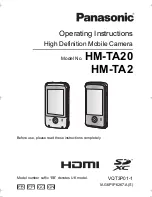
© 2009 IDS Imaging Development Systems GmbH
17
4 USB Basics
4.3
Cabling and Connection
In order to comply with the specifications, the maximum length of USB 2.0 cables is limited to 5 m.
Longer cables may be connected if you use high-quality material. For cameras of the
USB uEye RE
series, IDS offers cables with a length of up to 10 m (see also USB uEye RE Accessories).
The USB bus provides power supply with 5 V and 500 mA max. Many USB devices use the bus
power and do not need external power supply (
bus-powered
devices).
Cable design
The following illustration shows the basic design of a shielded USB cable:
·
D+/D-:
data transfer
·
+5 V/GND: power supply
Figure 10: Basic design of a USB cab le
Connector types
On the PC side, USB 2.0 cables are equipped with a standard A type plug (four pins) and on the
device side either with a standard B plug (four pins) or a mini-B plug (five pins).
In addition, cameras of the
USB uEye SE
series can be connected to IDS camera cables that use a
nine-pin micro D-Sub screw connector. Besides the USB 2.0 signals, these connectors can also
carry the camera’s digital input/output signals.
Figure 11: USB
standard-A socket
(four pins)
Figure 12:
USB
standard-B
socket (four
pins)
Figure 13:
USB mini-B
socket (five
pins)
Figure 14: Micro D-Sub
(nine pins)
4.4
Data Transmission and Bandwidth
The USB 2.0 standard specifies an overall bandwidth of 480 Mbps shared between different
transmission modes.
uEye
cameras use the USB 2.0
bulk
mode for transmitting images. This mode
uses error correction to ensure correct delivery of the image data, but does not guarantee a fixed
bandwidth. To ensure error-free communication with all connected devices at all times, the maximum
bandwidth for payload data is limited to 416 Mbps.
















































